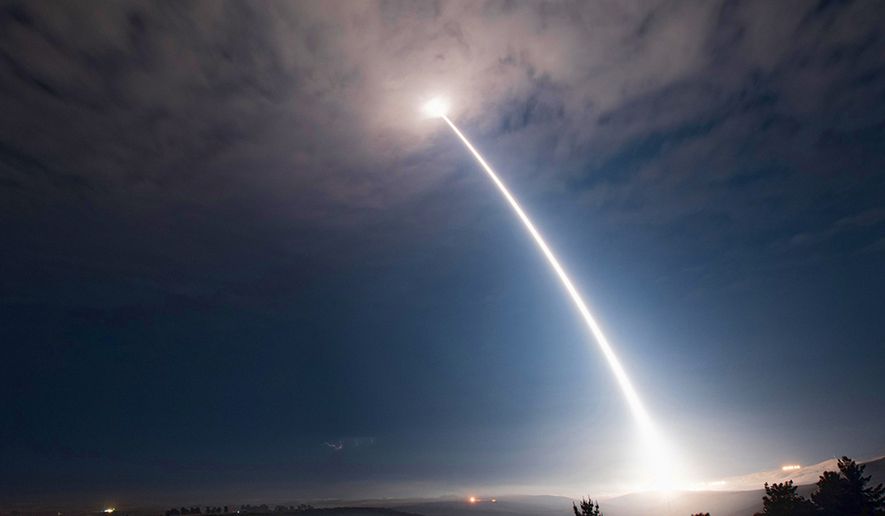A sharply higher new estimate of the cost of modernizing the U.S. nuclear arsenal is raising questions over whether Congress is prepared to foot the bill.
A Congressional Budget Office analysis released Thursday put the total projected cost for maintaining and improving the U.S. government’s nuclear missile arsenal at $494 billion over the next decade — up 23 percent from the CBO’s estimate just two years ago.
“The nation’s current nuclear forces are reaching the end of their service life,” the report said. Nearly all of the military’s land-based intercontinental ballistic missiles, long-range bomber aircraft, shorter-range tactical aircraft carrying bombs, nuclear warheads and submarines that launch ballistic missiles will have to be replaced or refurbished in the next 20 years.
But New Democratic House Armed Services Committee Chairman Adam Smith quickly labeled the nuclear modernization cost “unaffordable.”
“In recent times, U.S. national defense policy planning has largely refused to grapple with the size and scope of the budgetary burden that these nuclear modernization plans will impose,” the Washington state Democrat said in a statement.
“We cannot continue to blindly follow that path without a strategic discussion that asks the big questions about the best way to deter nuclear war, reassure our allies, maintain a credible and reliable deterrent, and accomplish our national objectives while taking into account budgetary reality,” he added.
The Department of Energy’s projected costs are 25 percent higher than the previous estimate, totaling $168 billion to maintain and improve nuclear capabilities, while the Defense Department’s estimate came in at $326 billion, or 22 percent higher than formerly projected.
Mr. Smith, Washington state Democrat, had previously called for a review of the Trump administration’s Nuclear Posture Review (NPR) and a ban on some of the weapons cited in the CBO’s report, including low-yield nuclear warheads.
Texas Rep. Mac Thornberry, the ranking Republican on the House armed service panel, noted even with the new CBO numbers, the nuclear tab still represents roughly just 7 percent of overall defense spending.
“What I believe all the previous estimates have been is that at no point does it take more than 7 percent of the defense budget — and from my standpoint, it’s upon which most of our defense efforts are based,” Mr. Thornberry told Defense News.com.
But, Mr. Thornberry added, “I have no doubt [the higher price tag] will be a topic we discuss this year.”
The CBO figures reflect the administration’s 2017 NPR, which called for three additional nuclear items — a new submarine-launched ballistic missile, a sea-launched cruise missile, and higher plutonium production — that would increase the cost of nuclear forces $17 billion by 2028, but the final estimate is still uncertain.
A large majority of the proposed budget would fund long-range strategic nuclear delivery systems and weapons, short-range tactical nuclear delivery systems, nuclear weapons laboratories, and the Pentagon’s communications and early-warning systems.
• Lauren Toms can be reached at lmeier@washingtontimes.com.




Please read our comment policy before commenting.